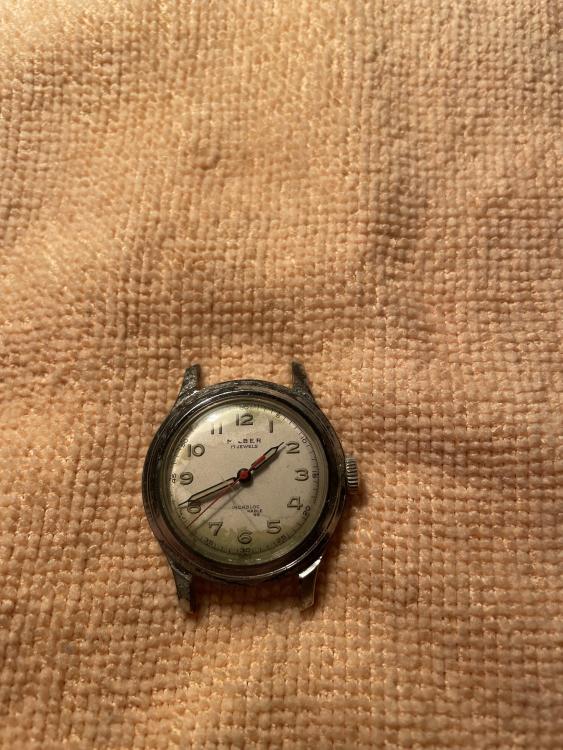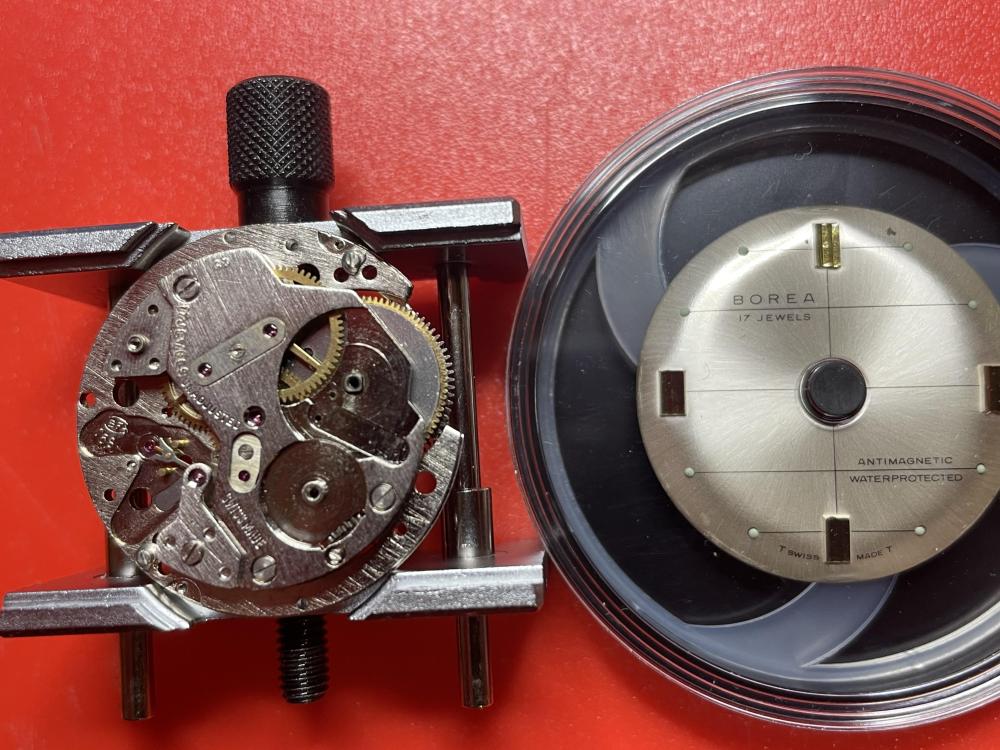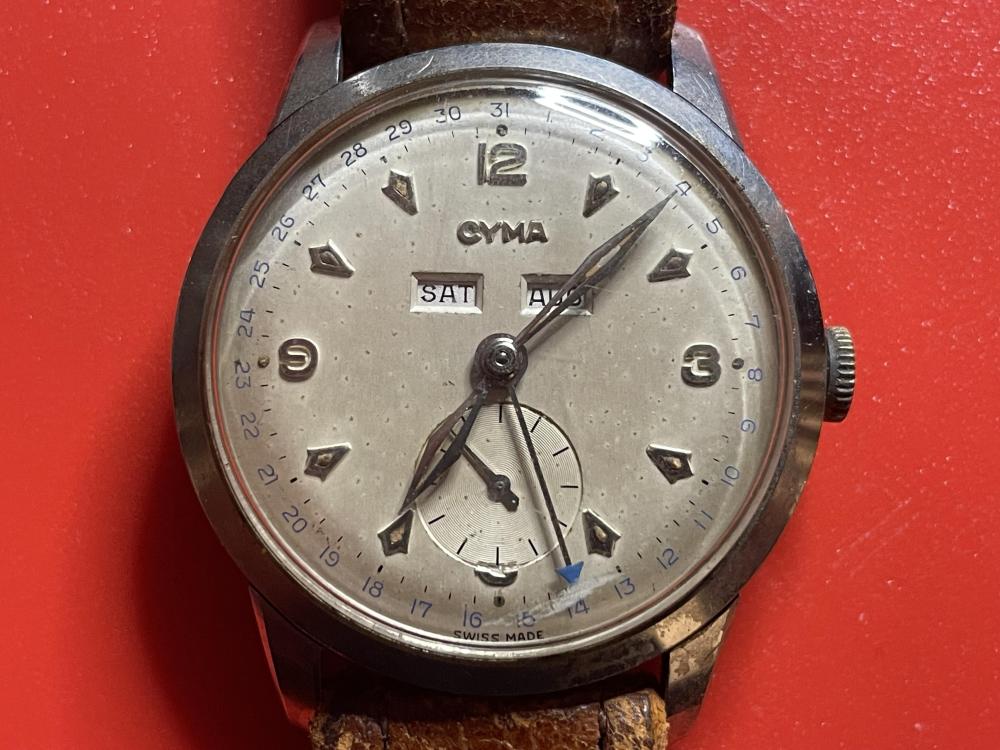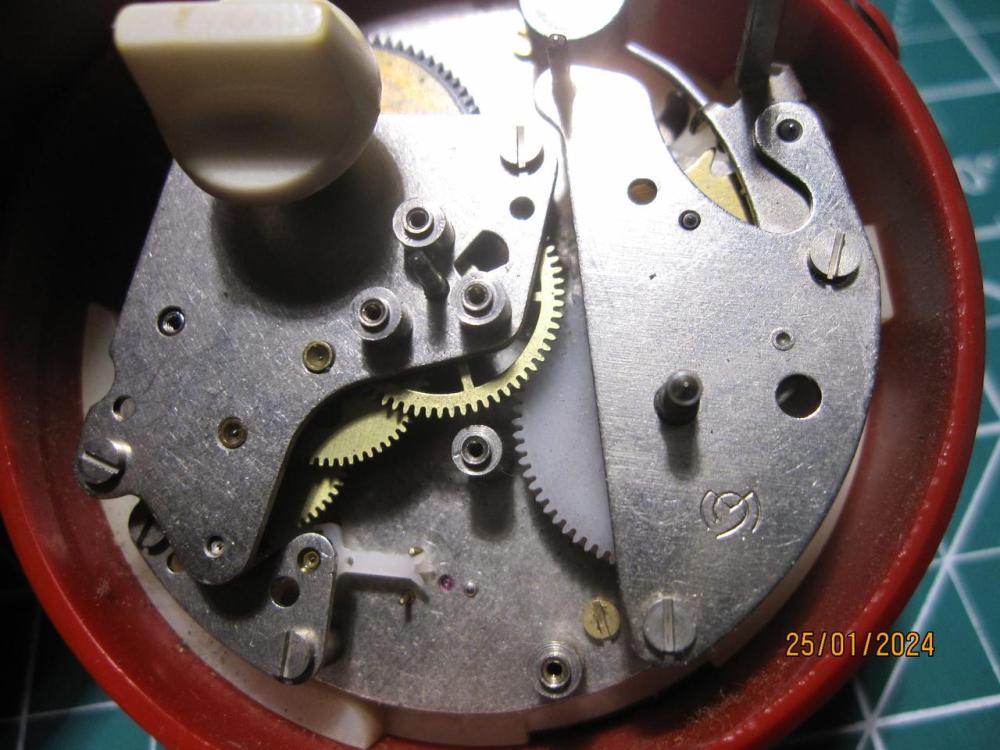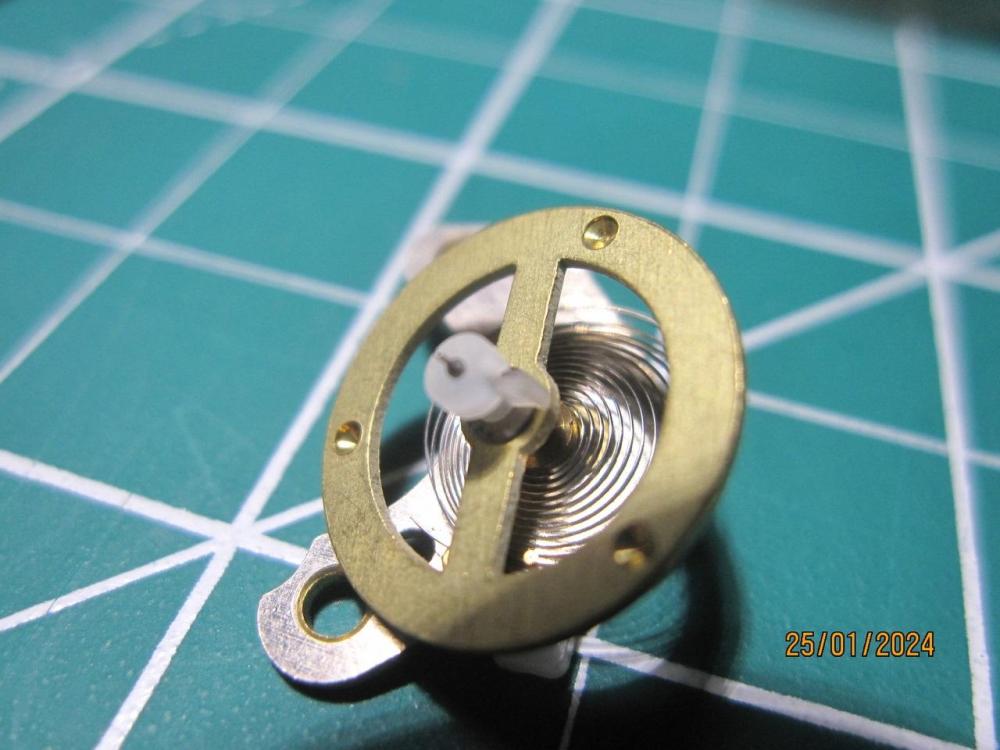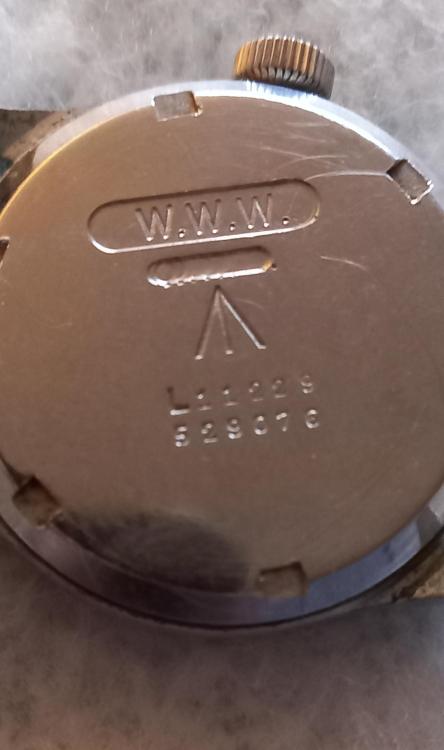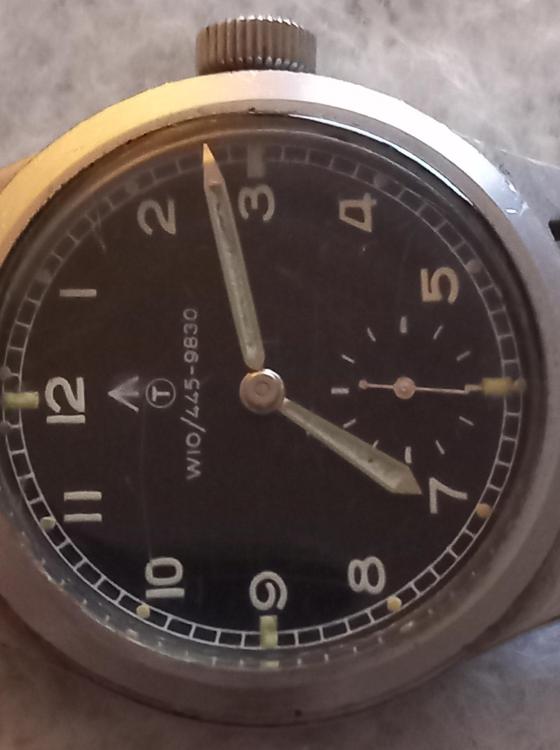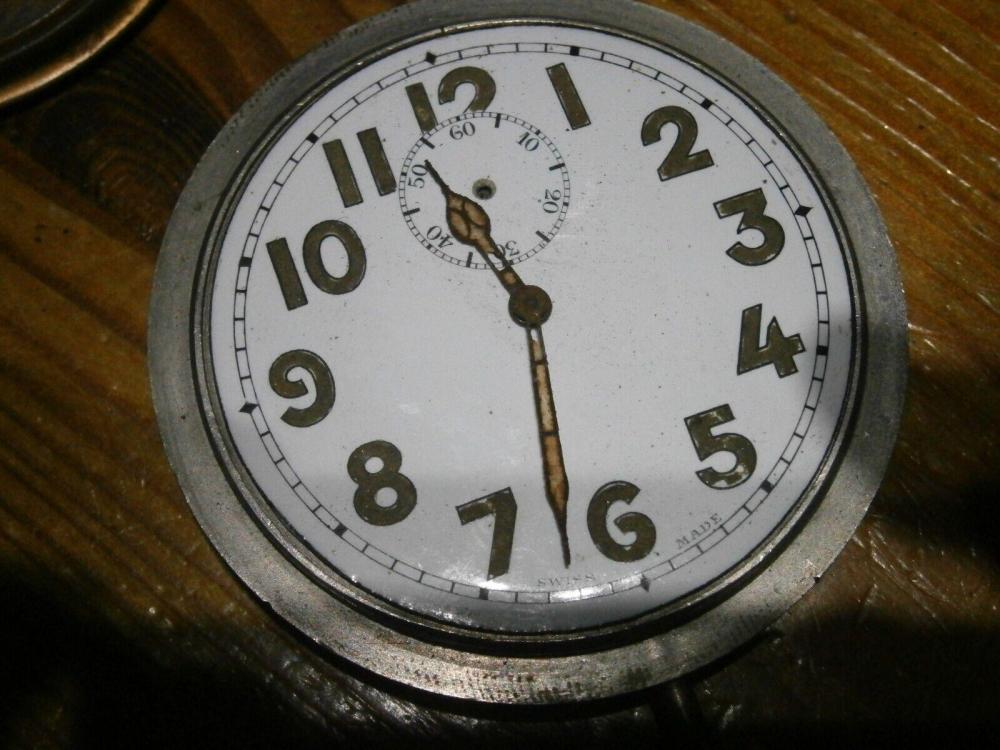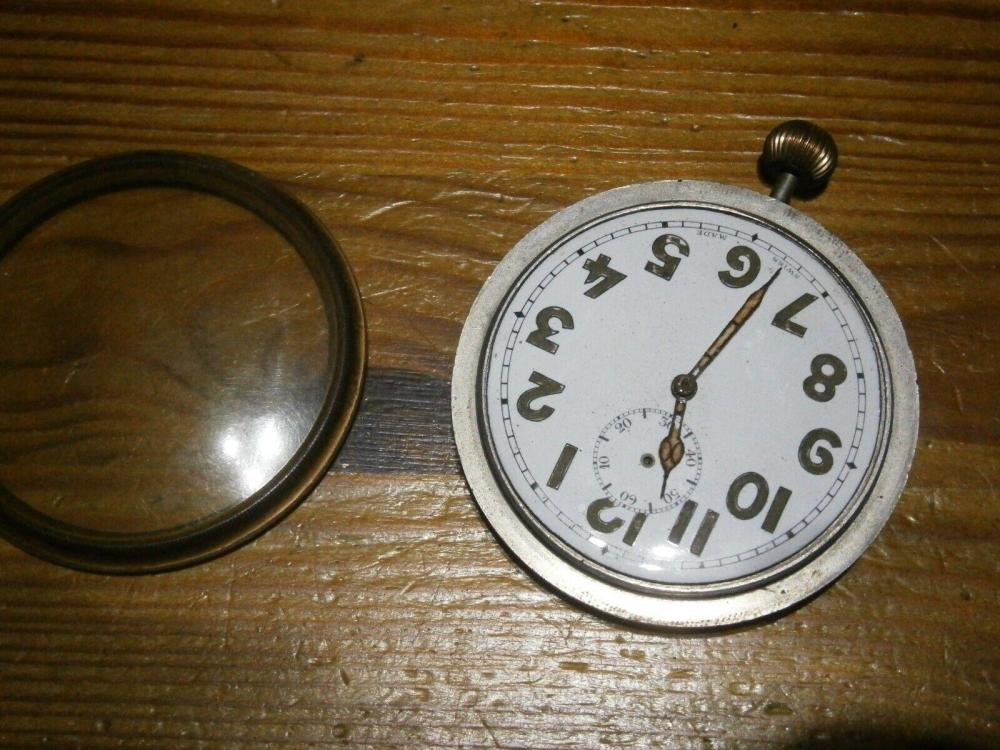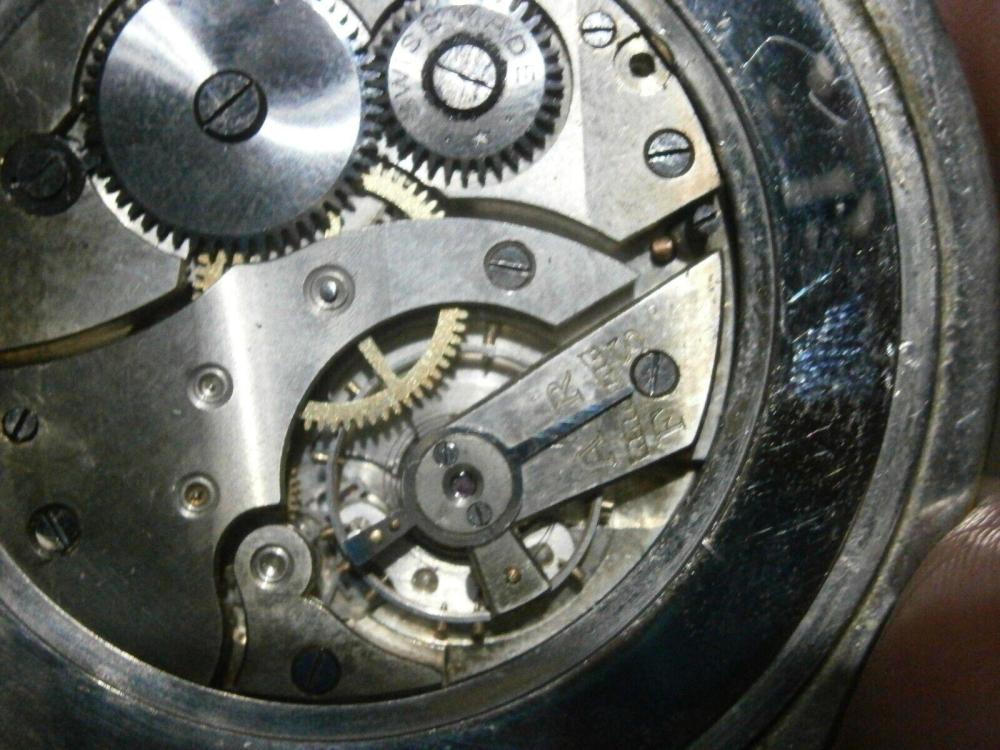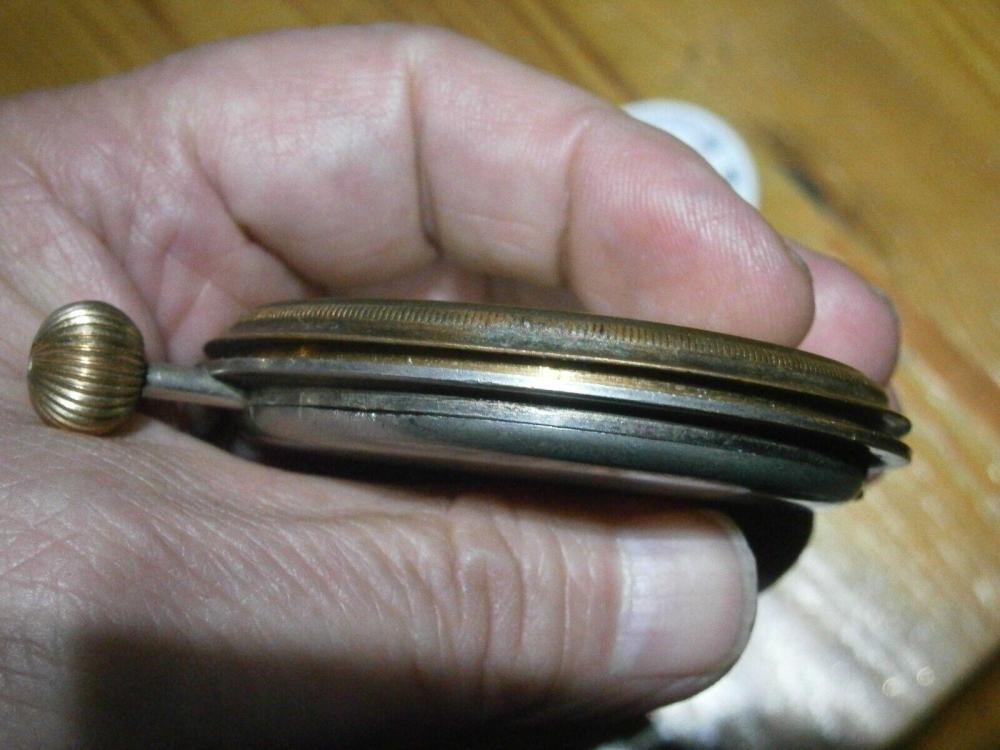Search the Community
Showing results for 'Radium'.
-
Hello y'all, I have a quick question regarding this little beater. Does this seem radioactive to you? As you can see, the lettering on the logo and some description of the watches movement were brushed off by one of my water dipped q-tips. I had no idea it was that sensitive, and it also makes me think that this dial is super old. Is it possible that it's radioactive? If its only a little, then I'm ok with that. But I'm not sure. I think it's fairly possible that this watch predates the 1960's when radium was not known to be bad. Feel free to bash me for the dial cleaning job or let me know if it's safe or not. Thank you, -Matt
-
Not at all, they presumably are using tritium - I've just never seen a watch with it, in person. All mine are are either no lume, radium or phosphor (only glowing after exposure to light). [Other than the digital ones!] I have other things with tritium "glow", which have noticeably faded quite a bit in the twenty plus years I've had them, from very obvious to rather dim. I'd guess tritium is mainly used on more recent, high end watches? I buy either vintage ones that look interesting, or ebay juck packs that tend to have either very well worn vintage or cheap digital and "bling" grade stuff..
-
Excellent post and advice @Mercurial I agree with everything you say. Yes, this is important to understand. The good thing is that you can start pretty slowly and then if your interest grows, increase the number of tools. I wouldn't be surprised if I've spent the equivalent of one or two good Rolex Submariner watches since I started eight years ago. The nice thing is that I appreciate my tools at least as much as my watches. There is something truly magical about using a well-used patinated Swiss quality tool that a skilled watchmaker used for decades. Again, excellent advice, and when you want to go wristwatch size but still not take any financial risks I'd recommend Vostok 24xx movements such as Vostok 2409. Most modern watches, less than 60/70 years or so, seem to secure the impulse jewel with friction only so that should be safe to rinse in IPA (isopropanol, not Indian Pale Ale). I've never handled Radium but Kalle Slaap made an interesting video about it some time ago. As I understand it, it's the dust that can "kill" you. https://youtu.be/Z-A-e8zSoOM
-
As long as you don't grind the stuff up and blow it around, you should be fine. Use a dust mask if in doubt. The things I'm very careful of are: Radium lume - even the stuff that is visually completely dead and inert is still highly radioactive; it's the fluorescent part that decays, not the radium. A single speck inhaled or ingested can cause cancer, so store parts in zip bags and wear a dust mask & wipe your work area down after handling anything that uses it. A proper geiger counter is a good investment if you plan on working with vintage watches, so you can check for it & take appropriate precautions. "One dip" & equivalents - the original type & the generic PERC dry cleaning fluid (Tetrachloroethylene / perchloroethylene) which is what the original one dip was mostly made of. That's toxic, a known carcinogen. Use in very good ventilation only & keep it sealed whenever possible. The newer B-Dip is presumably a safer replacement.
-
Hi Bob, Welcome to the forum and thank you for your service. I would never try to discourage you from getting into this wonderful hobby/profession, but please be aware, it does not cost just a few dollars to get into watch repair. Tools are expensive and in many instances the cheap knockoffs are worthless, especially when learning. You can get the tools needed to disassemble, clean, inspect, reassemble and lubricate a watch without spending thousands, but as soon as you start getting into task-specific tools, there are so many and they don’t come cheap. My suggestion is to start with the basics required to disassemble, clean, inspect, reassemble and lubricate only, and build upon that gradually as the need for other tools arises. The advice above regarding starting out on working movements is gold. Many of the non-running watches on eBay have been bought, tinkered with, deemed too difficult and then sold again, often with more damage done each time. Without experience, you clean and service a non-runner and it still doesn’t run. What now? Troubleshooting is difficult as a beginner. This can become very frustrating. I would encourage you to buy a working movement, and learn to strip and service it. If it isn’t running afterwards, you know it’s down to you, and as long as you didn’t damage anything you know that the parts you’ve got can form a ticking watch. An excellent movement to start with is the ETA 6497 clones from China, such as the ST36. They’re not expensive, and although it finds use in some larger wristwatches, this movement was originally designed for use in pocket watches, so everything is larger and easier to see and handle. Once you can service a new ST36 and have it running better than it did when it arrived, you’re definitely ready to step up to working vintage watches and then think about repair of non running or poorly running watches. As far as cleaning solutions go, you will not do better than the commercial watch cleaning and rinsing solutions that are available. You’ll find plenty of suggestions for home brew cleaners online, but the professional products are superior and you want to give yourself every advantage you can, especially when you start working on vintage movements containing hardened decomposed lubricants and often years worth of other dirt and dust. Alcohol is ok for cleaning or rinsing movement parts that don’t contain any shellac. The pallet fork and roller table contain jewels secured with shellac and will tolerate a rinse in alcohol but not prolonged exposure. Methanol dissolves shellac faster than ethanol, and isopropyl alcohol dissolves shellac slower than ethanol. Just in case you don’t know already, the radium on the dial (and likely the hands) of your Dad’s Elgin is highly radioactive. It is safe enough when safely contained within the watch case, but the moment you open the watch and especially when handling the dial or hands you must take precautions against inhaling or ingesting any radium. Best Regards, Mark
-
I was directed to introduce myself< > Bob Smith, veteran, retired, still ticking. After I started training in emergency medicine it became clear I needed a good time piece (checking pulses, or respirations, or tourniquet times etc.) I wanted one like my fathers trench Elgin with the radium dial, but that dial has faded badly since the 50s so I looked on Ebay. There are a lot of interesting and affordable vintage (mechanical) watches and while Rolex is a little expensive the second best watch , Elgin, is quite available, especially if you're a beginner collector and don't mind lady watches. It's disturbing that they call the new watches "vintage", those new battery operated jobs. Getting my fathers Elgin restored looks like $150 to start but becoming a 'watch smith' costs just a few dollars (without ultrasonic cleaning tank). I just started collecting and know nothing but willing to learn. ( I hope I find an affordable way to get dad's Elgin back to it's radiant radium glory) (I'd appreciate any advice on cleaning antique watches (I guess alcohol isn't recommended) (or how to tell what movements are best (I have a 555 coming).)
-
I take it that you're comment re the Unicorn is 'tongue-in-cheek'? Would any of the watches that are on the link I posted be likely to be radium watches? What period was that prevalent in and when did the practice stop?
-
Well, I'll need to wait for a replacement hairspring. I completely butchered attempting to fix it. Dropping it doesn't help. I did learn that I need more than just a monocle for magnification and that entry level tweezers are not acceptable for this level of repair. Still, I guess it's important to find your limits early, and I did learn about Breguet coils, so thanks everyone for chiming in! @nevenbekriev thanks for the advice on radium, I just flashed a UV light on them and they glowed for about a second and that's it. I thought radium glowed for like 1600 years? Am I way off base there? Next updates once I get the replacement spring and get it back on the balance.
-
Looks like it is only dirt. If rust, then this means the strenght of the spring is reduced in places with rust, so the spring is damaged and useless. Only light surface rust, which is rather residual from other places activity of rust can be cleaned, and no chemicals that can etch the metals of the spring aloy should be used Be aware that this usually happens when the dial/hands have radium lume! One of the pivot looks little bent. Not that much to prevent the movement from working, but may be amplitude will be a little bit smaller when this pivot down, resing on the cap stone. Bent pivots always means the balance is out of poise, but it depends on the severity of the bent. Yes it can be straightened, but at this point I will advice to leave it as is and check how the movement performs.
-

Identifying watch for possible radioactive concern
rjenkinsgb replied to kr2's topic in Identify This Movement or Watch
Definitely worthwhile, if you are working with old watches - just be sure it's an actual Geiger counter, not one of the vast range of scam/fake "Radiation detectors" on ebay & amazon etc. that detect RF or static electricity... In the mean time, I'd put the dial and hands in zip bags & wipe down the work area with a damp cloth to pick up any dust, then discard the cloth. The emitted radiation from radium lume is not normally harmful - but inhaling or ingesting a single particle of the material can cause serious long term harm, so do take care with it. -
Identifying watch for possible radioactive concern
Geotex replied to kr2's topic in Identify This Movement or Watch
Sometimes you can see a burn mark on the dial from hands that have stayed in one place for decades, which is a clincher, but I don't really see that here. An inexpensive detector could let you know for sure, but considering the dial/hand style and the darkened condition of the dots on the dial in the absence of any clear water damage, I'd give 90% likelihood that there is radium there. Tritium is usually marked out on the dial, and although it moves to yellow and tan as it ages, it doesn't get as "toasty" as those dial spots based on what I've seen. -
Hi, a friend has just left these with me to see if I can get them going; they were his Father's and they have sentimental value. He apparently tried to get them serviced a few years ago and was told they were too old. (No idea where he tried). The first one is a Borea, which I've started disassembling. The movement has a number BF158 - searching for that brought me back to this site! An entry in the 404 Club topic for a Shelton watch. This one has the same basic movement, but in a 17 jewel version - though still with a pin pallet ?? This looks to be generally OK, just gummed up with old lubricants. It's in a well worn and tarnished gold plated brass case. The other is really strange; a Cyma, what seems to be a "Cymaflex triple date" from what @ve found on google? There are two flush pushers in the side, presumably for date setting? This one had radium lume, and it's giving the highest count of any watch I've ever had; near enough one millirad per hour at the crystal. The speckles on the dial appear to be lume particles, as the hands don't have much left in place... I'm not really sure how to safely proceed with this one, to avoid contaminating anything? It does have a separate bezel with a knife groove. It tries to run with a gentle rotation, but only 10 - 15 seconds at a go.
-
The natural lume is seen on the dial and it has green color. It doesn't seem to have radium, also they stopped using radium in the 50's and this clock is made later. Do the dots on the dial still shine for some time in the dark right after ehposed to bright light? Good work with the hands! The factory existed untill mid 90's and then was closed. In the 80's they started to put plastic wheels under dial and plastic barrel for the alarm spring. When the factory was closed, the movement looked like this and only 2 jewejs left from 11 in the original
-
Do you think that the original lume had radium? I'm sure it did. They were not concerned about safety.
-
Hi Neven, Thank you for the history of this clock. There was a "2017" molded into the bakelite base of the clock. I thought it was the production date. The lume on the hands of this clock were replaced with black paint but I see from photos on eBay that the hands were originally lumed. I was thinking of restoring it back to the original look. Do you think that the original lume had radium?
-
the back looks rough tbh, this is my record with a recall for radium dial and hands decommission, replaced with nato stores equivalent. Any www back i have seen is or was polished, i would bet money the back is not original. The dial could be old stock but something is niggling me. It was niggling me just looked at half a dozen examples and the 12 numerals are too close together. Its posible that after over 25,000 produced there could be some discrepancy on the dial. There should be lots of engraving on the backside of the caseback ? I think there should also be a letter code on the case itself, on one of the lugs.
-
Lovely watch. I have a 267 - similar movement with sweep seconds. (Wish it wasn't radium dial!) If you know you can source a new part* (where from?), then I guess have a go flattening the rivet. As you say, it's going to be tricky supporting it. *I know parts are hard to find for these movements. I managed to trash the hairspring on mine whilst adjusting the overcoil. I waited a long time before I found a replacement.
-
Merry Christmas too all.
gpraceman replied to RichardHarris123's topic in Relax Zone: Chat About Anything Here
Merry Christmas to all! Glad to see some got watchmaking related gifts. I got a watch storage box. Much nicer than just tossing them all in a drawer. I also got an Amazon gift card, which I will apply to maybe a Geiger counter, to check for radium, and a copy of Henry Fried's The Watch Repairer's Manual. -

Which Watch Have You Got Coming In The Mail ? Show Us !!!
AndyHull replied to SCOTTY's topic in Your Watch Collection
Another 404 club prospective member is on its way. This one is an automobile style long stem "pocket watch", with radium lume dial and hands. The seller claims that it ticks, so that's always a bonus. It is missing the seconds hand, and the crystal is somewhat yellowed. There were a couple of enamel dials in the lot too. -

My father's Accurist watch ID ?
mikepilk replied to ianrichards's topic in Your Current Projects and Achievements
Can you see any lettering under the balance? (BTW There looks to be a lot of flaking radium from the dial and hands. So read the postings about the precautions you need to take before removing the movement) -
They would have to pay me to take it away (and then I'd bin it) Cheap pin pallet movement, radium dial, lots of entertainment. You could put a lot of time and effort it, and it still might not run very well. I'd go for something Swiss with at least 15 jewels, that way there's a fair chance of it running pretty well after all your effort. It's amazing what you can find for £10-£30. I recently bought two great quality ladies watches (Movado and Longines) for less than £30.
-
Strange stuff
JohnR725 replied to Waggy's topic in What is this tool? How do I use it? Tools Identification
You probably don't really want the radiation detector. Ill just cause undue stress especially if you start acquiring a vintage stuff. Somewhere but it's hiding in the attic I believe in a metal box I have an actual kit for reapplying your radium luminescence material. But then I also have some of the wax stuff that they used to sell. used to have is really little tiny tins that had wax with the luminescence material dissolved in seed heated up and put it underneath the hand in to fill in the hand and that's what the Steelers. I was never really impressed with it. But I discovered with my Geiger counter that some of the ones I have actually have radium in their which has really surprised about because but the radium was supposed to be phased out by? On the other hand I have a whole bunch of cards that have radium hands even without the Geiger counter you can tell because if you push the hand decide you can see the burnt paper from the radium. So do I get really excited to get some military hands are dials then you monitor gets very excited Here's what the powder we think it is it's available from cousins https://www.cousinsuk.com/product/diamantine-bergeon



